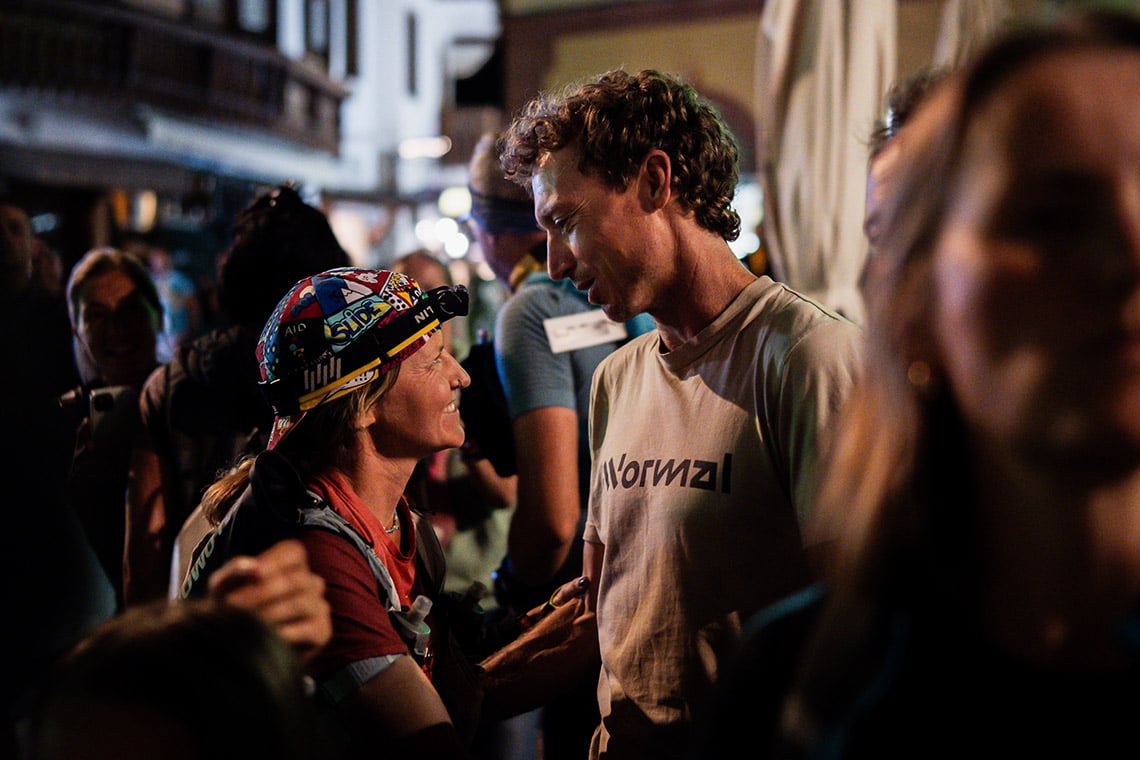After months of dedicated training and being focused on your goal, it’s difficult to accept and adapt when the unexpected occurs and turns everything upside down.
That’s the position many of us find ourselves in right now, with the COVID-19 pandemic causing massive disruptions to our normal way of life. Races are being cancelled, governments are asking us to follow social distancing measures, and even stay at home as much as possible.
There are also many other situations that can throw our training plans into turmoil; a family emergency, a natural disaster like a flood or hurricane, or an injury. Smart athletes know how to pivot and change things up when necessary.

Michael Arend coaches ultra and marathon runners, as well as triathletes and ski mountaineers.
Professional running coach Michael Arend says in the face of the unexpected, when your plans are torn asunder, it’s important to step back and ask yourself what will keep you motivated moving forward. “If you love your sport, you will find a new goal to keep you going,” he says.
We talked to Michael, a former officer in the German Mountain Army, semi pro runner and host of Germany’s most popular running podcast, Fat Boys Run, and asked how to adapt when our plans get dashed.
He gave us 8 tips on how to keep improving.
Keep going for it if ...
This comes with an important caveat; even if your goal has disappeared, you should continue peak training if your training data shows you are still making progress. If your average heart rate is decreasing over time on your long runs, or your pace is improving while your average heart rate remains the same, then this shows you are continuing to improve. When this progress stops or reverses, then it’s time to reduce your effort and allow more time for regeneration.

Box jumps build explosive power. Photo by Meghan Holmes on Unsplash
Use your peak
What goes up must come down … and this is true for peak fitness so Michael advises not to try and hold on to it. “Use your peak right now,” he says. “If your plan was to run a 10k race, but it was canceled, then run a Strava segment, or try for a treadmill personal best. Use your peak and say goodbye. Then look ahead and be positive, you will gain it again if you work hard.” If you try to stay at your peak you will end up overtraining and exhaust yourself. Use it and lose it.
Find a new goal
Many of the athletes Michael works with from his office in the south of Munich need a goal to stay motivated. Others are happy to just keep improving. If you’re the former type, then find yourself a new goal. Given the current global disruption, you might need to be creative. For example, Michael says a top German runner decided to run a 50k on his treadmill and ended up breaking the world record.
“Choose a goal, even if you don't know whether it will happen,” Michael says. “The main thing is it keeps you going.”
Have a Plan B
One of Michael’s clients is a top trail runner. Her goal is to perform well at a race that could be cancelled. If that’s the case, her Plan B is to attempt an FKT (fastest known time) on a trail that is a similar distance, terrain and elevation gain as the race.
“Have one goal for motivation, and one goal that will take place 100%,” Michael says. “Try to make the Plan B goal mirror the A goal.”

Photo by Chanan Greenblatt on Unsplash
Focus on your base, but only when ...
If your race has been cancelled and there isn’t another one coming soon, Michael recommends focusing on capacity training. He works with two training phases in his coaching; capacity and utility. The former is about building endurance, cardiovascular fitness, V02 Max and maximizing mitochondria to gain more energy.
Utility training is specialised according to the sport and the goal. “For example, runners who want to run a marathon a month or two away need to run a lot of mileage at a special pace, and try to reduce the fatigue at this pace,” Michael says. “This is an example of a specialisation.”
Right now if you don’t have a race, go back and concentrate on capacity training and you will continue to improve overall, and then you will be very well placed to specialise at a later date.”
However, a block of capacity training is at least eight weeks long, and better if it’s 12 or 16 weeks, Michael cautions. The body needs this amount of time to respond and adapt to training. If you only have four weeks, then capacity training doesn’t make sense.

Photo by Alora Griffiths on Unsplash
Build power and strength
If you don’t have at least eight weeks for a block of capacity training, then Michael advises to focus on power and strength training. “If you want to step back just for four weeks, it’s better to do some plyometric, core and strength training,” he says. “If the strength training is very hard, say four by four reps with heavy weights for example, then you will see improvements after three to five sessions. Plyometric training can include box jumps and skip rope to improve your explosiveness.”
Work on your weaknesses
“Most of the people I work with never usually train their weaknesses because there is always a race around the corner,” Michael says. “But right now they have the time. Distance runners, for example, usually don’t do their speed work. Now is a good time to do interval training.”
Another common weakness Michael sees is a lack of explosive power. “Especially in those who don’t have an athletic background,” he says. “They lack efficiency and ‘pop’ in their spring. This is because their tendons and muscles lack the stiffness to fire, to store power and then explode with it. They don’t train that.”
Chill with your family
If you usually spend 10 to 15 hours a week training, that’s time you aren’t with your family. While training is awesome for you, it can be hard on them. “Right now is a good time to spend time with your family and recharge your batteries,” Michael says. “Take care of your body and mind. Your training doesn’t have to fall apart because you reduce. It’s also a good time to take care of any injuries or niggles you might have had. Relax!”
Lead images: © Photo by Element5 Digital on Unsplash

































































































